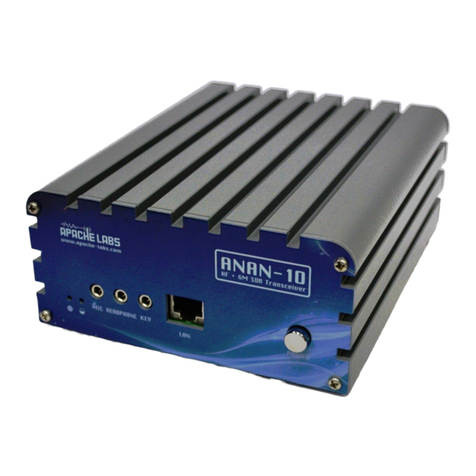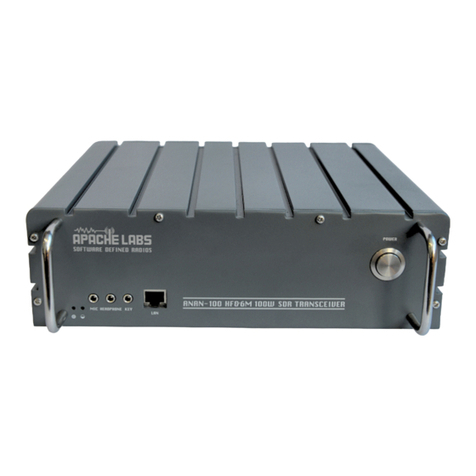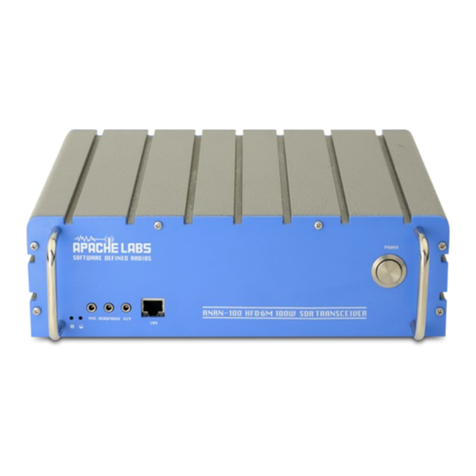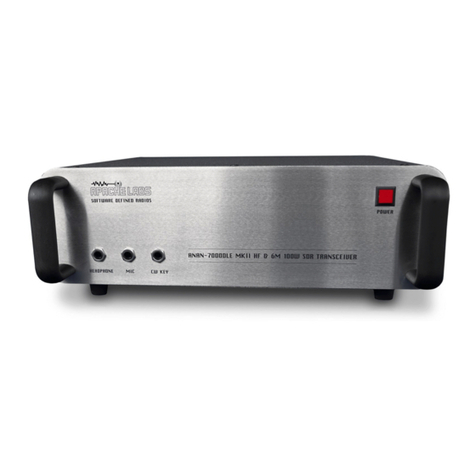
ANDROMEDAManual Page7of56
1KeyFeatures
TheANDROMEDA/ANAN‐7000DLEMKIIi5/i7AmateurRadioTransceiverisamoderndirect‐down‐
conversion[DDC]receiver,anddirect‐up‐conversion[DUC]transmitter,SoftwareDefinedHF
transceiverplus6Meters.ANDROMEDAhasaproudheritagefromtheTAPRHermesTransceiver
introducedin2012.Itisbasedupontheestablished7000DLEmk2RF,DSPandPC,plusanintegrated
frontpanelwithradiocontrolsandtouchscreendisplay.
TheANAN‐7000DLEMKIIi5/i7modeliswithouttheAndromedafrontpanel,itiscapableofbeing
upgradedwiththeAndromedaFrontpanel.ThismodelsupersedesthepreviousIntegratedPC
ANAN‐7000DLEMKIIandincludesanumberofimprovementsandupgradestothehardware.
ANDROMEDAfirmwareupdatescanbeeasilyinstalledviatheradio’sstandardEthernetconnection,
eliminatingtheneedforspecialmechanicalorprogrammingadapters.Itisnotnecessarytoopen
theANDROMEDAcabinettoupdatethefirmware.A“Bootloader”switchhasbeenaddedtothe
backpaneloftheANDROMEDAforeaseoffutureupdates.
TheANDROMEDAtransceiverhasbeendesignedfortheTHETISPCSoftwareDefinedRadioprogram.
THETIShasthelatestSDRprocessingfromtheOpenHPSDRlineandisbasedontheprovenWDSP
libraries.Ithasfullsupportfordualreceivers,antennadiversityandPureSignalTXlinearization.
However,otherSDRprogramscouldbeusedincludingthosewrittenforWindows®,Linux,
MacOS/X®,Android,RaspberryPi,andotheroperatingsystems.Thecommandinterfacedtothe
frontpanelusessimplepublishedCATcommandsandotherprogramscouldbeadaptedtosupport
it.
1.1 Benefits
ANDROMEDA–Secondtonone!
UsingDirectDownConversionwithanultralowphasenoiseclockyieldsanRMDRof116dB
@2KHzseparation,thismeansthatcloseinweaksignalswillnotbemaskedbythe
receiver’sphasenoise.
Thetransmitterspecificationsarealsooffthechart,useofanew16‐bitDACwithanultra
lownoiseclocksourceresultsintransmitphasenoisebetterthananyotherproduct
availableinthemarket.
UseofLDMOSdriversandanoptimizedfinalAmplifierstagewithadaptivePredistortion
Algorithm(PureSignal)yieldstransmitIMDofbetterthan60dB,thisisatleast20dBbetter
thananyClassAtransmitterandover30dBbetterthanthecompetition.
Useoftwo16‐bitphasesynchronousADCsallowforadvancedapplicationssuchasDiversity
receptionforultimatenoisemitigationandeffectsofsignalfading.
TheANDROMEDAHF&6M100WSDRTransceiverofferstopofthelineperformanceinarugged
package,itisbasedontheworkoftheOpenHPSDRcommunity.
ThenewPAboardincorporatesthefollowingupdatesovertheprevious100Wgeneration:
PAGainredistributionforbetterIMD
ThermallycompensatedBias
Current/Voltage/TempSensors
Temperaturecontrolledinternalfanandoptionforexternalfan
IndependentBPFsand6MLNAsforeachADC;optiontogroundADC2onTX
ImprovedTXSNRandhigherdutycycleTX































